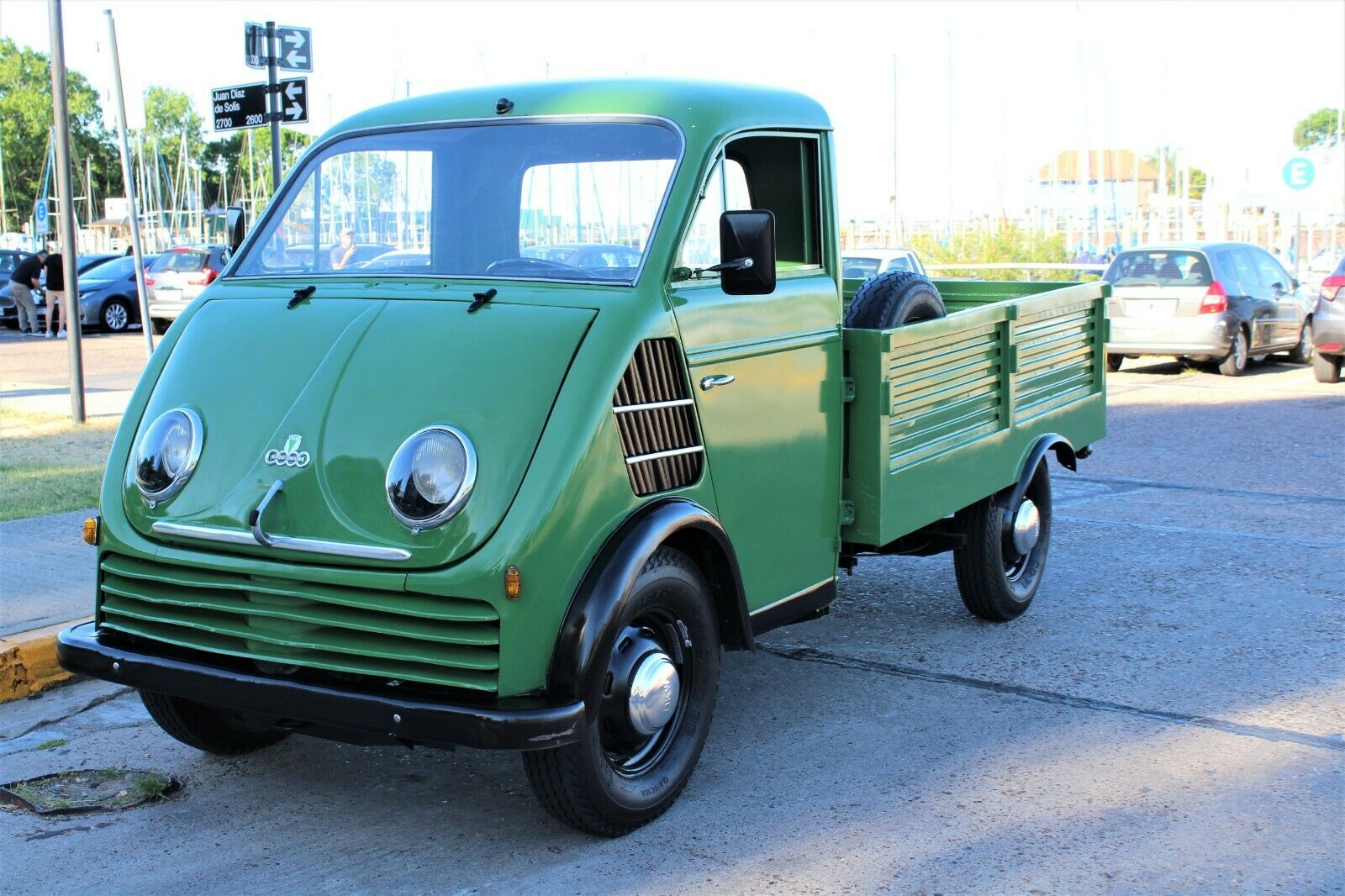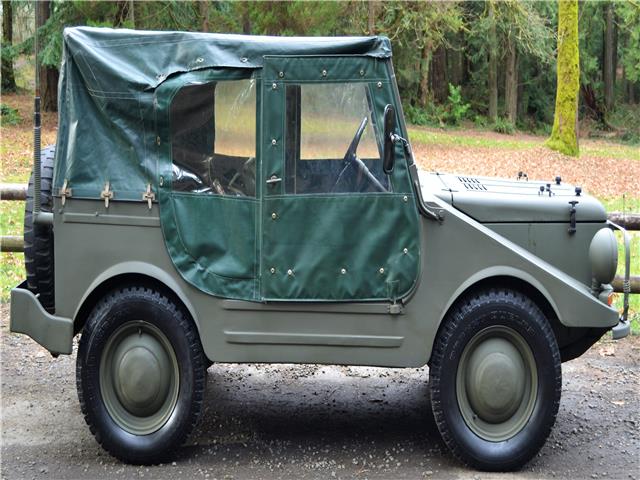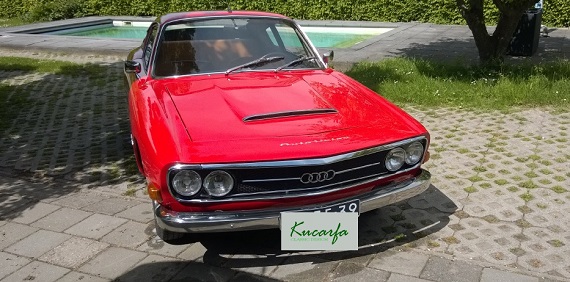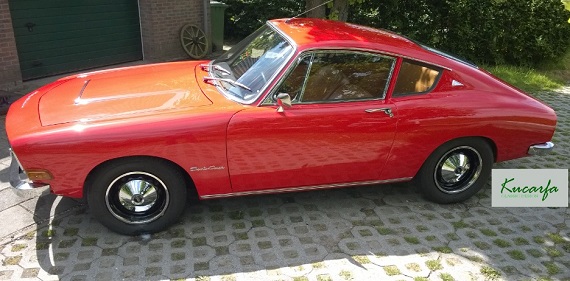The DKW F89 sprouted a few offspring; in Europe, it was offered as the F89L delivery van that was affectionately nicknamed the ‘Schnellaster’ and was available in Kastenwagen (delivery van) or bus form. Argentina also offered a version of the F89, and modified its offerings to include a small pickup. These were sold under the Auto Union nameplate in the early 1960s, and what you see here is one that has survived in its home country until today. And, it can now be yours…for a price!
Tag: DKW
Most German car enthusiasts are no longer familiar with the name “DKW”. It’s a shame considering the long history of DKW, whose name originates from the German Dampf-Kraft-Wagen or “steam powered vehicle” – just to give you a sense of the time period they started out. DKW reached its zenith in the 1930s, a time when Germany was experiencing massive growth in its economy and Hitler wanted to turn the Fatherland into a nation of drivers. Ironically, despite his notable efforts supporting Grand Prix racers and the development of the Beetle, pre-War automobile ownership in Germany was amongst the lowest in all of Europe. They were, rather, a nation of riders – motorcycles, to be precise, buying more of the two-wheeled transport than anyone else in Europe. It was what gave companies like BMW a start, for example, but the most successful of all of the pre-War motorcycle companies was DKW. Upon joining the Auto Union in 1932, they began experimenting more with small cars. But the aftermath of World War II meant that the area that DKW, Audi and Horch – 3/4 of the Auto Union company – were stuck in Soviet controlled areas, most of the factories being disassembled and sent back further behind the Iron Curtain as war reparations.
The result was that in the late 1940s and early 1950s, new efforts to resurrect these names were attempted. It’s not very surprising that the attempts were made; after all, imagine if Chevrolet went out of business due to a War; you can bet once things were cleaned up, someone would try to make a Corvette. And sure enough, based upon some pre-War designs the F89 was born. As with most post-War cars in Germany, it was small, affordable and versatile. DKW utilized the platform to create what was, in essence, the first Audi Avant. The F94 chassis you see here was an updated version of the F89, replete with the 2-stroke 3-cylinder engine that the company claimed gave the power of an inline-6 – hence the paradoxical naming strategy of 3=6 for the Sonderklasse. With a space-saving transverse motor driving the front wheels, there was ample room for flexible seating in the rear. Outside was a reasonably aerodynamic, compact design and the small motor ensured reasonable fuel economy – though no promise of speed. Today, nearly 70 years after the design was first sketched out, finding these Universal Kombis is extraordinarily hard – and when they surface in the U.S., they’re typically not in particularly good shape:
CLICK FOR DETAILS: 1957 DKW 3=6 Universal Kombi on eBay
Comments closedWhile legend has it that Audi popularized all-wheel drive with the Quattro, it would not have been the case were it not for the 1970s Volkswagen Iltis – a military vehicle that utilized a normal Audi 100’s underpinnings to create an all-wheel drive vehicle with lockable differentials which easily outpaced Audi’s normal production line cars in inclement conditions. It was this story which sprung the idea for the Quattro to be created, but the Iltis itself had inspiration drawn heavily from another car – the DKW Munga. As Auto Union struggled to re-establish itself post-War under first the leadership of Mercedes-Benz and later Volkswagen, the company’s diminutive DKW brand led the way with economical, smart designs. One of those designs was the paradoxically-named 3=6 model, which had a .9 liter 2-stroke inline-3. Produced in Düsseldorf, DKW helped to keep the Auto Union’s name alive in the early 1950s. Part of that rebuilding included new Auto Union facilities in Ingolstadt, and one of the first production vehicles to make it out of there was the Manga. German for Mehrzweck UNiversal Geländewagen mit Allradantrie (basically, go anywhere all-wheel drive vehicle), the Manga utilized F91 (3=6) underpinnings mated with new all-wheel drive capability. Up front, the four rings of the Auto Union reappeared proudly on the roughly 47,000 models produced between 1956 and 1968 – a full decade prior to Iltis production:
CLICK FOR DETAILS: 1963 DKW Munga on eBay
1 CommentFor some time, the fate of Audi seemed sealed. Post World War II, Auto Union GmbH’s production was focused on the DKW automobiles that fit into the European economic situation much better than the pre-War luxury cars from Horch and Audi. But the market was changing, and Auto Union launched the very pretty 1000SP Coupe and Convertible. But, there was no denying that the 1000SP looked like a 1950s car in a 1960s world. Audi’s production would really have to wait until the launch of the C1 chassis in 1968; prior to that, some re-badged DKW models wore the Audi name but sold only in small numbers. The C1 would prove to be a pretty popular model, though, and the new 100 model would be available as both a sedan and as a 2-door “Coupe S” model. The lines of that model, as with the 1000SP, mimicked more expensive and famous cars such as the Fiat Dino and Aston Martin DBS. It was a pretty large departure from the mini-Thunderbird look of the 1000SP and much more modern. But, it appears that there may have been a missing link developed in the mid-1960s:









